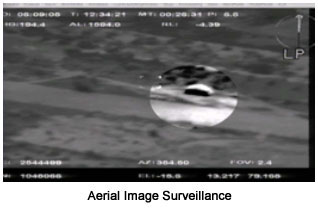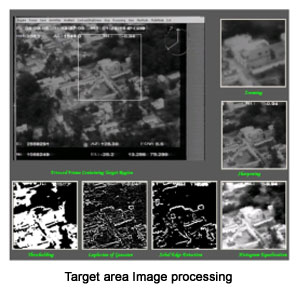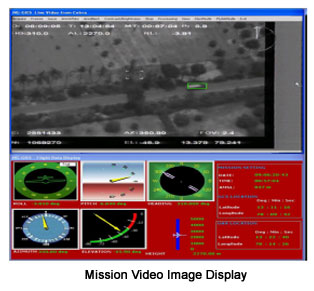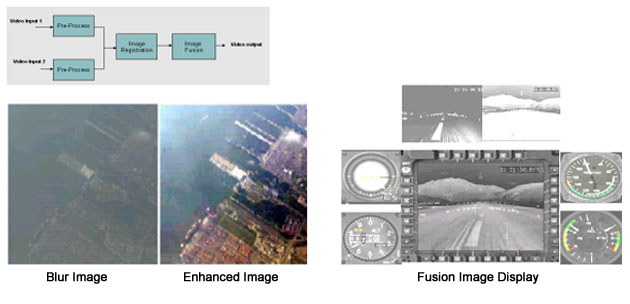HCL Technologies: At the cutting edge
07 Jan 2009
Leading global IT services company HCL Technologies is offering computer-based vision and image processing capabilities for specific use in aerospace and defence industries. The capabilities on offer are the product of skills developed by the company's aerospace practice over the last five years.
HCL Technologies, a $2 billion subsidiary of HCL Enterprise, says it has developed proprietary technology that now allows it to offer image processing solutions for a whole range of applications, including high resolution images from satellites.
Such capabilities, according to HCL Technologies, include processing images from unmanned aerial vehicles (UAVs); real-time video capture and image exploitation in surveillance and reconnaissance missions, done through the use of embedded technologies; enhanced fusion vision for situational awareness applications, as well as automatic vision inspection systems for quick inspection of components in a manufacturing industry.
The company says these technologies are part of applications it has developed to meet specific client needs and are proven solutions.
Broadly, the applications cover four areas:
- Aerial image surveillance
- Multi-sensor fusion
- Automatic fuselage vision inspection
- Satellite image processing
Aerial image surveillance

Airborne surveillance is widely practiced in both civilian and military forms and includes various functions such as search and rescue missions, border security, resource exploration, wildfire and oil spill detection, target tracking etc.
HCL Technologies says it has made use of its deep domain knowledge to develop a full suite of real-time aerial video surveillance capabilities, which will not only allow transforming blurred ''noise'' into clear imagery but also enable large-area visualisation and video processing.
Its image processing technologies will include real-time image acquisition, image pre-processing for noise removal and adaptive enhancement which will create a comprehensive, panoramic field of view display.
Real-time capabilities will also include geo-registration capabilities with reference imagery to improve accuracy, search area, tracking moving-objects, region of interest processing, geo-location identification, image area measurement and creation of image database of targets under different resolutions with feature details.


It has already designed and developed an embedded vision engine known as Ground Image Exploitation System (GIES) for an aeronautical agency. The system processes large volumes of sensory information, or image data, acquired from a range of sensors, including optical, infrared and radar data. GIES has functional features that help acquire, store, retrieve, process, analyze, interpret, display information from imagery even as a mission is in progress.
Multi-Sensor Fusion
Multi-sensor data fusion seeks to combine information from multiple sensors, or sources, to achieve an understanding of our surrounding that is not feasible through a single sensor, or source. Such fusion of information provides the basis for planning, decision-making and also control of autonomous and intelligent machines. It involves combining images obtained by sensors of different wavelengths that simultaneously view the same scene and forming a composite image. The composite image makes it easier for the user to detect, recognize and identify targets and thereby increase his situational awareness.
HCL's research in fusion algorithms improves the information content of composite imagery and makes the system sufficiently robust in handling variations in the scene, such as dust or smoke, and other environmental conditions, i.e. day or and night.

One such multi-sensor application developed for civilian use is the Enhanced Fusion Vision System (EVFS). The system combines two sensor sources, visible and infra-red sensor images, obtained through a CCD camera recording of the scene and processes the image using a enhanced, embedded fusion vision processor.
The system comes in handy particularly in poor visibility, such as rain, snow or fog, or in adverse weather conditions, where it may be difficult for an aircraft pilot to land or take off. The EVFS can handle such a situation very well as it allows operations to be performed in real time and aids the pilot, for instance in taking appropriate action.
Automatic Fuselage Vision Inspection
Inspection of components inside an aircraft is a very tedious and time consuming process during the assembly or production process if performed by humans. During the assembly process gasket, nuts, rivets, and other debris tend to collect and if not removed, or inspected properly will short circuit lines, leading to disaster.

HCL Technologies has developed expertise in non-destructive inspections and detection of surface defects using machine vision cameras and image processing techniques. Defective parts are automatically detected using machine vision image processing technology, which can spot defects such as rust, scratch, presence /absence of parts and make measurements and do gauging studies.
HCL Technologies has also developed image processing software that allows image enhancement, edge detection, filters, geometric pattern matching, blob detection, part positioning, measuring, barcode reading, object recognition and flaw detection, gauging and color tools.

Satellite Image Processing
Image processing is a key technology for operational exploitation of satellite images. Digital image processing involves the implementation of computer algorithms aimed at fulfilling several tasks in acquisition, management, enhancement and processing of images in digital format.
Digital image processing includes the detection, perception, interpretation or enhancement of targets within images. HCL says it has developed expertise in image processing techniques which involve development of a set of tools and also techniques such as histogram correction and equalization, convolution and morphological filtering, spectral processing, segmentation, description, classification and so on for image interpretation and analysis.
It says it has implemented several advanced image processing techniques such as Fourier transform, geometric segmentation and classification.
It has also developed data fusion techniques which take the best attributes from multiple sensors and merges them into one product. The most common example of such a product is the fusion of a high spatial resolution panchromatic image with a set of lower spatial resolution spectral image.

Domain expertise
Part of the $5 billion HCL Enterprise, HCL Technologies domain expertise extends to a range of mission critical avionics, including electrical systems, power systems, environment systems, fire protection systems, test systems, hydraulics, landing gear and in-flight entertainment.
It is the first Indian IT solutions provider for the aerospace industry to obtain AS 9100 certification, a testimony to its quality and domain expertise. The company now secures complete outsourcing assignments that involve independent development of core avionics sub-systems.






















